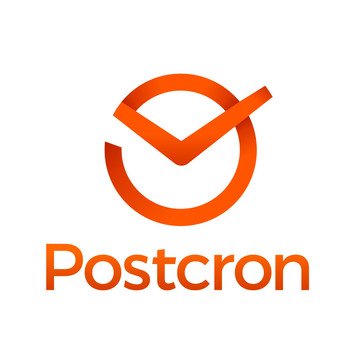In the vibrant world of social media, where every post and tweet can be a game-changer for your business, choosing the right management tool isn’t just a decision—it’s a strategy. Enter ContentCal and Postcron, two giants in the realm of social media management, each with its own set of superpowers designed to catapult your online presence to new heights. But here’s the million-dollar question: which one is the hero your brand needs? Whether you’re a solopreneur dancing a solo ballet on the digital stage or a marketing maestro orchestrating a symphony of online campaigns, we’re here to help you make that leap. Let’s dive into the heart of this comparison, starting with a critical battleground: Ease of Use and User Interface.
| ContentCal | Postcron |
|---|---|
 | |
| G2 Score – 4.2 out of 5 stars | G2 Score – 4.4 out of 5 stars |
| TrustRadius Score – 8.6 out of 10 | TrustRadius Score – Nil |
Ease of Use and User Interface: Your Daily Digital Companion
The user interface of a social media management tool is more than just a pretty face. It’s the environment you’ll navigate daily, where ease and intuition translate into efficiency and effectiveness.
ContentCal: The Intuitive Innovator
ContentCal prides itself on an interface that’s as inviting as a warm cup of tea on a rainy day. Designed with the user’s comfort in mind, it combines aesthetic appeal with practical functionality, making the art of social media management feel like second nature. From its visually rich content calendar to its straightforward navigation, ContentCal turns the complex choreography of managing multiple channels into a graceful dance. It’s particularly lauded for its collaborative features, allowing teams to harmonize their efforts with minimal friction and maximum creativity.
Postcron: The Straightforward Strategist
Postcron, on the other hand, takes a no-nonsense approach to its user interface. It’s the digital equivalent of a Swiss Army knife: compact, efficient, and surprisingly powerful. Postcron focuses on streamlining the content scheduling process, with a clear, uncluttered interface that puts functionality at the forefront. While it may not boast the visual flair of ContentCal, its straightforward design ensures that you spend less time figuring out how to use the tool and more time leveraging its features to boost your brand’s online presence.
The Verdict: Choosing Your Perfect Match
Deciding between ContentCal and Postcron comes down to your preferences in daily operations and your team’s workflow. If a visually intuitive platform that fosters collaboration and simplifies planning resonates with you, ContentCal could be your ally in the digital arena. Its user-friendly design and emphasis on teamwork make it ideal for brands looking to engage deeply with their content strategy.
Conversely, if efficiency and a straightforward approach top your list of priorities, Postcron’s streamlined interface offers the no-frills efficiency you need to get the job done. It’s well-suited for marketers who value speed and simplicity in their social media management.
Both ContentCal and Postcron offer pathways to a more organized and impactful social media presence, but the right choice will depend on how you and your team navigate the digital world daily.
Content Creation and Curation Capabilities: Fueling Your Social Media Engine
In the bustling world of social media, content is the fuel that keeps your brand’s engine running. Let’s see how ContentCal and Postcron equip you with the tools to create and curate compelling content.
ContentCal: The Creative Collaborator
ContentCal stands out for its comprehensive approach to content creation and curation. It’s not just about scheduling; the platform provides an environment where creativity flourishes. With features like the content hub, users can store ideas, draft posts, and collaborate with team members, all within a single, intuitive interface. This collaborative approach ensures that every piece of content is crafted with care and aligns with your overall strategy.
Moreover, ContentCal offers integrations with various content sources, making it easier to curate relevant articles, images, and videos that resonate with your audience. This seamless blend of creation and curation tools makes ContentCal a powerhouse for teams that prioritize high-quality, collaborative content production.
Postcron: The Efficiency Expert
Postcron focuses on efficiency, offering tools that streamline the content creation and scheduling process. While it may not provide the same level of collaborative features as ContentCal, Postcron excels in facilitating quick and straightforward content curation and scheduling. Its bulk uploading feature, for example, allows users to schedule large volumes of content across multiple platforms with ease, saving valuable time and effort.
Additionally, Postcron’s ability to automatically add watermarks to images and its customizable post templates cater to users looking for a balance between personalization and productivity. These features are particularly useful for brands and marketers who need to maintain a consistent online presence without dedicating extensive resources to content creation.
Making the Right Choice for Your Content Strategy
Choosing between ContentCal and Postcron for content creation and curation ultimately depends on your team’s needs and how you approach your social media strategy. If your focus is on producing high-quality, collaborative content that engages your audience, ContentCal’s suite of creative and integrative features offers the support you need to bring your ideas to life.
Conversely, if you’re looking for a tool that emphasizes efficiency and simplifies the content scheduling process, Postcron’s streamlined approach ensures you can maintain an active social media presence with minimal hassle. Its focus on productivity makes it ideal for users who need to manage multiple accounts but have limited time for content creation.
Both ContentCal and Postcron recognize the central role of content in successful social media management, offering different paths to achieving your goals. Whether you lean towards a collaborative, detailed approach or prefer efficiency and simplicity, your choice will shape how effectively you can engage with your audience and grow your brand’s online presence.
Analytics and Reporting: The Backbone of Informed Decision Making
The ability to track, analyze, and interpret social media performance data is a cornerstone of successful digital marketing. Let’s delve into how ContentCal and Postcron provide these essential insights.
ContentCal: Comprehensive Analytics for Strategic Depth
ContentCal’s analytics feature is designed to offer users a deep dive into their social media performance. It provides a comprehensive suite of analytics that covers various metrics, including engagement rates, reach, impressions, and more across all connected platforms. This level of detail is instrumental for marketers seeking to understand the nuances of their audience’s behavior and content preferences.
Furthermore, ContentCal allows for the creation of custom reports. This flexibility ensures that you can tailor your analytics to focus on the metrics that matter most to your business goals, facilitating more informed strategic decisions. Whether you’re presenting to stakeholders or refining your content strategy, ContentCal’s analytics provide the granularity and customization needed for a nuanced analysis.
Postcron: Streamlined Analytics for Efficiency
Postcron approaches analytics with an emphasis on efficiency and simplicity. It offers a streamlined analytics dashboard that provides clear insights into post performance, including basic engagement statistics and audience growth. While it may not offer the breadth of metrics found in ContentCal, Postcron’s reporting tools are designed to be easily understandable, offering quick snapshots of your social media health.
This focus on straightforward analytics makes Postcron particularly appealing for businesses or individuals who prefer a no-nonsense approach to performance tracking. Users can quickly gauge the success of their content and make necessary adjustments without getting bogged down in overly complex data analysis.
Navigating the Data Landscape
The choice between ContentCal and Postcron, when it comes to analytics and reporting, ultimately hinges on your needs for data complexity and reporting flexibility. If your strategy relies on detailed analytics and the ability to customize reports extensively, ContentCal offers the depth of insights and flexibility needed to support a data-driven approach to social media management.
Conversely, if your priority is straightforward, actionable insights that allow for quick strategy adjustments, Postcron’s streamlined analytics provide the essential data needed to understand your performance without the complexity.
Both platforms recognize the importance of analytics in crafting successful social media strategies, but they cater to different preferences regarding data analysis and reporting. Whether you choose ContentCal for its comprehensive analytics or Postcron for its efficiency, ensuring that the platform’s reporting capabilities align with your strategic goals is key to leveraging social media data effectively.

Related: Check out our free SEO suite

Integration Capabilities: Connecting Your Digital Marketing Tools
In an era where digital marketing tools proliferate, the power of a social media management tool is not just in its standalone features but also in how well it plays with others. Let’s explore how ContentCal and Postcron stand in terms of integrating with other software and services.
ContentCal: The Versatile Connector
ContentCal distinguishes itself with a broad spectrum of integration capabilities, designed to serve as the nerve center of your digital marketing ecosystem. It integrates seamlessly with major social platforms, which is table stakes for social media tools, but goes beyond to connect with a wide array of other marketing tools. ContentCal’s integrations include content creation tools, analytics services, and customer relationship management (CRM) systems, among others. This extensive connectivity is facilitated in part through Zapier, which opens the door to thousands of app integrations, allowing for a highly customizable setup. Whether you’re looking to automate content from your blog directly to your social channels, or you need to ensure your social media efforts are in sync with your email marketing campaigns, ContentCal’s integrations make it possible.
Postcron: Focused Functionality for Streamlined Operations
Postcron offers a more focused set of integrations, tailored to streamline the specific workflows involved in social media management. While it may not boast the extensive list of direct integrations that ContentCal offers, Postcron ensures that its users have access to the essential tools needed for efficient social media scheduling and management. This includes direct integrations with major social media platforms and selected third-party services that enhance content creation and performance analysis. For users whose primary concern is the efficient management of social media content, Postcron provides a streamlined approach that integrates well with key platforms, ensuring that the most critical aspects of social media management are covered without overwhelming users with too many options.
Choosing the Right Integration Ecosystem
When deciding between ContentCal and Postcron based on integration capabilities, consider the breadth and depth of your digital marketing toolset and how central social media management is to your overall strategy. If you rely on a diverse array of tools and services across different facets of digital marketing and need a social media management tool that can act as a hub, integrating seamlessly with a wide range of other platforms, ContentCal’s versatile connectivity offers a compelling advantage.
Conversely, if your focus is squarely on streamlining your social media management processes and you prefer a tool that offers focused, essential integrations without the complexity of a vast ecosystem, Postcron’s streamlined approach ensures that you have the necessary connections to manage your social media content effectively.
Ultimately, the choice between ContentCal and Postcron should align with your specific integration needs, reflecting how your social media management tool fits within the broader context of your marketing activities. Whether you need a tool with broad integration capabilities or one that excels in streamlined, essential connections, both ContentCal and Postcron offer pathways to create a more integrated and efficient marketing operation.
Pricing: A Critical Component of Your Choice
The right social media management tool should offer a balance between cost and functionality, providing the features you need at a price that makes sense for your business.
| ContentCal | Pro Plan: Starting at $17 per month per user (billed annually), offering 4 social profiles, unlimited posts, and content planning features.Company Plan: Custom pricing for teams and businesses that need more social profiles, additional users, and advanced features like analytics and priority support. |
| Postcron | Basic Plan: Starting at around $8 per month (when billed annually), suitable for individuals managing a small number of accounts. Professional Plan: Typically around $29 per month (billed annually), offering more accounts and posts. Business Plan: Priced around $79 per month (billed annually), designed for businesses needing to manage numerous accounts with higher post volumes. Agency Plan: Around $219 per month (billed annually), providing extensive support for agencies with many accounts and the need for bulk posting. |
ContentCal: Flexibility to Match Your Growth
ContentCal’s pricing model is designed with scalability in mind, offering several tiers to accommodate businesses at various stages of growth. From a basic plan suitable for individuals and small teams just getting started, to more advanced options that cater to the needs of larger organizations and agencies, ContentCal ensures that users can access the functionalities they require without paying for unnecessary extras.
The entry-level plan often includes essential features such as content planning and scheduling, with more advanced tiers offering additional capabilities like deeper analytics, more extensive collaboration tools, and greater social profile integration. This tiered approach allows businesses to start small and upgrade as their needs evolve, ensuring that ContentCal can continue to serve them effectively at every stage of their growth.
Postcron: Simplified and Streamlined Pricing
Postcron offers a straightforward pricing structure aimed at simplifying the decision-making process for its users. With a focus on providing comprehensive functionality at every level, Postcron’s plans are designed to cater to the core needs of social media managers without overwhelming them with too many options.
The platform’s pricing typically includes a basic level that supports a generous amount of social accounts and scheduled posts, making it accessible for small businesses and individual marketers. Higher tiers increase the limits on accounts and posts and introduce additional features such as bulk uploading and more advanced scheduling options. Postcron’s approach to pricing emphasizes ease of use and efficiency, aiming to deliver value to users who need to manage multiple social media channels without complication.
Making the Financial Decision
When comparing ContentCal and Postcron based on their pricing models, it’s important to consider not only the immediate cost but also the long-term value each platform can provide as your social media strategy evolves. ContentCal’s scalable pricing structure makes it a suitable option for businesses looking for a platform that can grow with them, offering the flexibility to expand functionality as needed. Its tiered system ensures that you can gradually access more sophisticated tools without jumping to a significantly higher price bracket prematurely.
On the other hand, Postcron’s streamlined pricing model is ideal for users who appreciate simplicity and predictability in costs. Its plans are designed to offer essential social media management features with clear limits and capabilities, making it easier for businesses to choose a plan that fits their current needs without worrying about scaling immediately.
Ultimately, your choice between ContentCal and Postcron should reflect your business’s specific requirements, including the size of your team, the scope of your social media strategy, and how you anticipate your needs changing in the future. Both platforms offer compelling solutions at different price points, but the best fit for you will depend on balancing your desired features with your budget.
Customer Support and Community Engagement: Ensuring a Smooth Social Media Journey
The dynamics of customer support and the vibrancy of a user community are often reflective of a platform’s commitment to its users’ success. Let’s evaluate how ContentCal and Postcron perform in these critical areas.
ContentCal: Nurturing Success Through Robust Support
ContentCal emphasizes a comprehensive support system designed to assist users at every step of their social media management journey. It offers multiple channels for support, including live chat, email, and a detailed knowledge base, ensuring that help is readily available whenever users encounter challenges or have questions. This multi-tiered approach to customer support underscores ContentCal’s commitment to user satisfaction and operational efficiency.
Beyond direct support, ContentCal actively fosters a vibrant community of digital marketers. Through webinars, user forums, and social media groups, ContentCal encourages knowledge sharing and networking among its users. This emphasis on community engagement not only enhances the user experience but also creates a supportive environment where users can learn from each other, share best practices, and discover new strategies.
Postcron: Streamlining Support for Efficiency
Postcron focuses on providing efficient and accessible support to ensure users can quickly resolve issues and return their attention to managing their social media presence. With a streamlined approach, Postcron offers a comprehensive FAQ section and support tickets, prioritizing clear, concise answers to user queries. While its direct support channels might seem more limited compared to ContentCal, Postcron’s system is designed for rapid response, reflecting its overall emphasis on efficiency.
In terms of community engagement, Postcron leverages its blog and social media channels to communicate with users, share updates, and offer valuable content marketing insights. While it may not have as extensive a network of user forums or groups as some competitors, Postcron’s approach to community engagement is focused on delivering quality content and support directly to its user base.
Choosing the Right Support for Your Needs
Deciding between ContentCal and Postcron based on customer support and community engagement comes down to your preferences for learning and interaction. If you value a wide array of support options and a highly interactive community that offers rich opportunities for learning and networking, ContentCal’s comprehensive approach may be more aligned with your needs. Its robust support system and active community engagement efforts are well-suited for users who appreciate a collaborative learning environment.
Conversely, if you prioritize efficiency and prefer a streamlined support experience that allows you to quickly find solutions and get back to work, Postcron’s focused support model might be the better fit. Its efficient handling of support queries and direct provision of insights and updates through its blog and social media channels cater to users who value simplicity and speed.
Ultimately, whether you choose ContentCal or Postcron, ensuring that the platform’s approach to customer support and community engagement matches your operational style and learning preferences will be key to maximizing your social media management tool’s benefits.
Conclusion
Choosing between ContentCal and Postcron for your social media management boils down to identifying the priorities and needs of your social media strategy. ContentCal shines with its robust support system and vibrant community, making it ideal for those who value collaborative learning and comprehensive assistance. Its extensive integrations and detailed analytics cater to businesses looking for a holistic approach to social media management, emphasizing strategic depth and team collaboration.
On the other hand, Postcron appeals to users seeking efficiency and simplicity, offering streamlined support and focused community engagement alongside powerful scheduling and automation features. It’s well-suited for marketers who need to maximize productivity and maintain a consistent online presence with minimal fuss. Both platforms offer unique strengths, but the best fit for you will depend on the balance you seek between comprehensive support and efficient operation, as well as the specific features that align with your social media goals.
Read Next:
- 31+ Top Social Media Management tools Compared! (2023)
- Aligning Startup SEO Budget with Business Objectives
- Startup SEO ROI: Analyzing Customer Lifetime Value Impact
- Budgeting for Startup SEO Tools: Maximizing ROI
- Proving Startup SEO ROI to Stakeholders: Reporting Strategies






















Comments are closed.